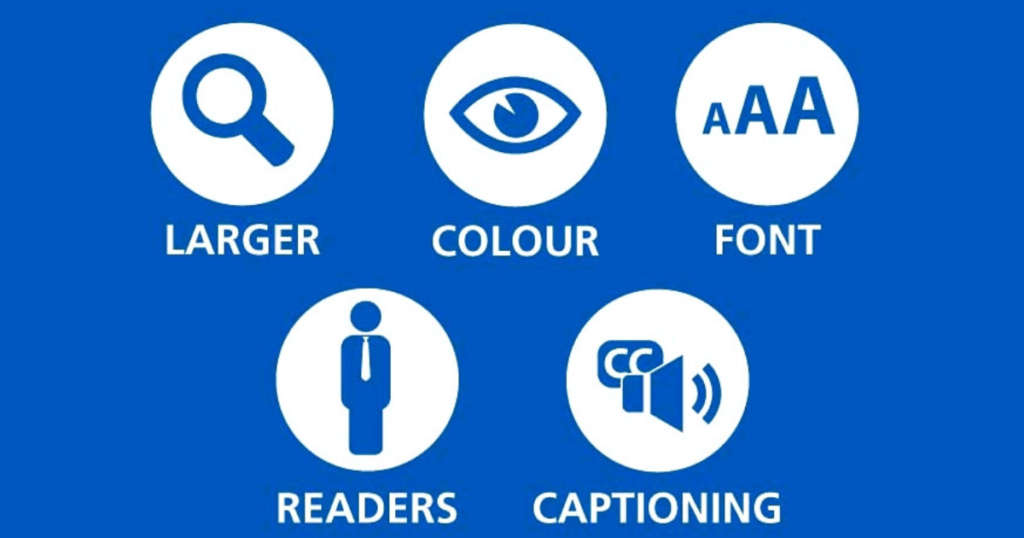The American National Association of Realtors recommended in 2020 making your real estate website ADA-compliant, and you should, but before you panic, here are the main things you need to know about website accessibility and ADA compliance.

ADA is the acronym for the Americans with Disabilities Act, enacted in 1990 to prevent discrimination against individuals based on disabilities.
Unfortunately, in 1990, the Web was not what it is today, and the initial legislation did not include any guidelines regarding website accessibility. However, things eventually evolved, and, in 2015, the first sites with mandatory accessibility regulations were governmental.
Today, the Americans with Disabilities Act applies to state and local governments (Title II) and businesses open to the public (Title III).
According to the Centers for Disease Control and Prevention, one in five American adults suffers from at least one form of disability; for example, a vision disability may be blindness or difficulty in seeing with glasses on. And circa 37.5 million Americans have some degree of hearing loss or auditory disabilities.
In 1995, Gregg Vanderheiden compiled the first guidelines to make websites more accessible to people with disabilities. These guidelines were the starting point for today's W3C Web Content Accessibility Guidelines (WCAG) 2.1.
In the fall of 2015, the DOJ released a Statement of Regulatory that addressed the need for ADA-compliant websites only for governmental institutions. However, it did recognize the main reason why all websites should be ADA-compliant:
"Being unable to access websites puts individuals at a great disadvantage in today's society, which is driven by a dynamic electronic marketplace and unprecedented access to information."
DEPARTMENT OF JUSTICE (DOJ) -- FALL 2015 Statement of Regulatory
Today, all governmental sites must be ADA-compliant, and the legislation evolved to include businesses open to the public: retail stores, banks, hotels, restaurants, entertainment venues, etc. The legislation stipulates that any business open to the public must have an ADA-compliant website. Those that don't are open to litigation.
For example, in 2019, Guillermo Robles sued Domino's Pizza because its website and app were not accessible to screen readers. The Court ordered Domino's to make its website accessible and awarded Robles $4,000.
While the list of "businesses open to the public" does not include real estate, stay on the safe side and set your site to compliant: you are working with the public, after all. To clarify, while Title III does not include real estate among its examples, it does stipulate:
"ADA requires that businesses open to the public provide full and equal enjoyment of their goods, services, facilities, privileges, advantages, or accommodations to people with disabilities."
ADA.gov: Guidance on Web Accessibility and the ADA
If you employ a design agency, the chances are that your site is already W3C and ADA compliant. If, however, you used the DIY approach and modified a WordPress theme, your site will not pass the accessibility checker test.
So, what can you do? First, you can use a web accessibility evaluation tool like WAVE or Accessibility Checker to see what you have to fix.
Then, if your site is not accessible, you can either ask your web designer to fix the issues or employ an accessibility agency like AudioEye or accessiBe.
The ADA Division of the U.S. Department of Justice and Civil Rights offers extensive guidelines on what website elements pose accessibility barriers to people with visual and auditory disabilities. And DIY is not an option unless you are a web developer.
Here are some of the most common web design elements that present accessibility barriers:
These are generic examples. The standards go in-depth and are far more technical. For more information, we recommend the following resources:
"Then, if your site is not accessible, you can either ask your web designer to fix the issues or employ an accessibility agency like AudioEye or accessiBe."
From https://realtybiznews.com/ada-compliance-and-websites-what-realtors-must-know/98772301/
You may want to do more homework. These tools do not make your site accessible and businesses with them are being sued daily!